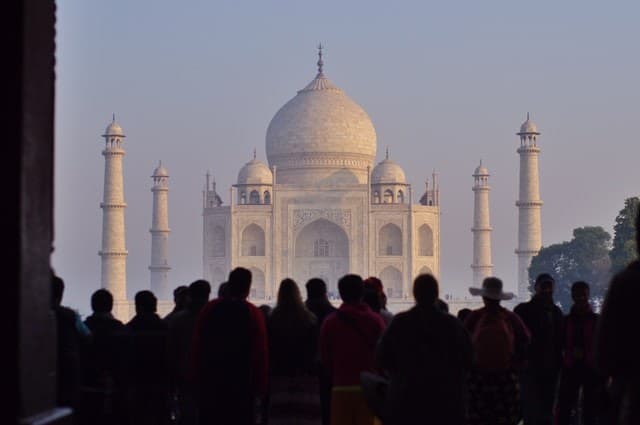Introduction
When approaching a new market, it’s a good practice to leave our ego at the door, and stop making assumptions which have no foundation on actual facts.
When approaching a new market it makes much more sense to invest time in understanding its unique features, paying close attention to how it has evolved over the past decades.
Let’s try to focus our perspective on the Indian subcontinent to understand how luxury brands can successfully approach their entry into this new territory.
Here’s a list of the topics we’re going to discuss in this article.
- Quick facts about India
- Luxury and consumer behaviour in India
- Glocal India
- Distribution and communication in India
- Conclusions
1. Quick facts about India
The first challenge as international marketers consists of developing an informed perception of India by looking at some key facts.
Here are some figures that can assist us in understanding why this market is like no other.
- India is a country made up of over 1 billion people spread across 28 states.
- There are over 17 languages and 22.000 dialects.
- Its geographical landscape ranges from the snow-peaked Himalaya to the desert of Rajasthan.
- There are three seasons: Spring, Summer and Monsoon season.
Already, by looking at these four simple figures we can quickly realise how this market is profoundly different from the ones fashion brands are used to dealing in the West. It’s only by focusing on the unique features of consumer behaviour in India that we may start to understand how to position our brand towards this unique market.
2. Luxury and consumer behaviour in India
As discussed in “The Cult of the Luxury Brand: Inside Asia’s Love Affair with Luxury”, developing economies have undergone a series of steps in their adoption of luxury products. This model is called ‘the 5-stage spread of luxury model’ and argues that countries, depending on their degree of development approach a series of stages in luxury product adoption which can be described as:
- Stage 1. Subjugation
- Stage 2. Start of Money
- Stage 3. Show Off
- Stage 4. Fit In
- Stage 5. Way of Life
While Japan can be considered an Asian market well into stage 5, other countries differ: China is in stage 3 and India is at the start of stage 2, slowly changing its consumer mindset from self-denial to self-indulgence.
This transition is made more complex by the fact that the Indian market is still partly closed to foreign companies, due to trade restrictions (such as tariffs) and strict regulations on FDI (foreign direct investment). The latter restrictions – especially in the context of retail – are especially relevant as brands need to establish a vertically integrated retail presence to provide a consistent brand experience globally.
Other factors which have impacted a slower pace of entry into the Indian market relate to the presence of big industrial families that have established more competitive entry threshold to foreign firms, because of their profound market knowledge and strong reputation.
Finally, the Indian consumer is no ordinary consumer. For as much as a luxury fashion brand can be considered ‘global’ India still requires companies to develop an adaptive approach to the market. Within India, there are many diverse cultural identities, some more traditional, other more prone to change. Both typologies, however, share history and heritage which brands need to take into account in order to provide product categories that match the behaviour of Indian consumers.
At the same time, as the country moves at a faster pace towards new modern standards of living, the very concept of the Made in India will soon lose its connotation of low quality and low cost. There is no real reason why Made in India couldn’t be celebrated for being a fashion manufacturer capable of working with prestigious maisons, such as Versace and Cerruti among many others.
There is a word which is used to discuss India: glocal, as the combination of local and global. The country has a strong national identity, while being extremely diversified. We’re going to discuss how this cultural dimension plays an important role for fashion companies in the next paragraph.
3. Glocal India
India is the metaphor of a country which marries its rich diversity and localised culture, to a strong national sense of uniqueness. This allows India to be at the same time an example of a local and global country, or glocal in short.
This cultural environment is a challenge for most brands as they are required to project a strong global personality, capable of echoing the many identities the country represents. This provides a unique product standardisationglobalisation challenge.
If on the one end, some western values cannot be forgotten – even simply in the design of seasonal collections – unique aesthetic elements such as the use of colour, embroidery and accessories cannot be ignored. These elements may clash and overlap in surprising ways, by conjugating rich textiles and fabrics with western-style elegance.
Now that we’ve discussed how glocal India is and how rich and diversified is its cultural identity, we can move to discuss distribution strategies and how luxury companies can invest in this country to provide premium retail experiences.
4. Distribution and communication in India
Aside from these issues regarding the product decisions that need to make to enter this market, another important set of decisions related to distribution. As the Indian market is still in the process of taking shape, first entry movers may both experience an advantage and a disadvantage. If the advantage consists in earning more loyalty from the customers – in relation to a minor degree of competition – the disadvantage pertains to operating in an unidentified market, where companies risk educating the public towards products that will be later offered by the competition.
On a more practical level, India does not follow western consumer habits and does not have luxury shopping malls.
As a result, the primary effort pursued by luxury companies in India relates to a create a form of communication that pushes the public to change its perception of what luxury is, in order to perceive it as something exclusive, yet inclusive. This is where fashion media and glossy magazines play a role, as they strive to plant the seed of a perception of luxury intended as something more profound and rich, than simple superficial appearance.
Even if very briefly, we attempted to review some of the most striking elements of Indian culture and heritage, let’s now move on to the conclusive statements of the post.
5. Conclusions
The unique challenges presented by the Indian market, making it a territory for business confrontation in terms of cultural awareness and product adaptation. The decision to enter this market for foreign luxury firms may be inspired by a long-term strategy which will ripe benefits in a decade.
At the same time, the huge cultural changes that are taking place in Indian society will be likely to speed up the market evolution and make India the new China in little more than 5 years.








